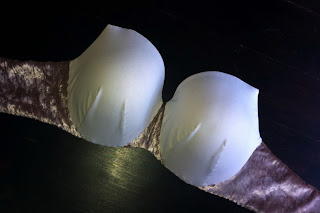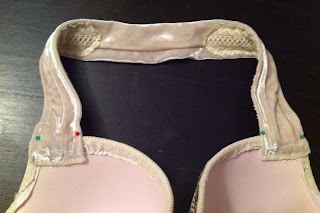Find Some Inspiration: That could be
anything. Really! Maybe there’s a particular move that you really like
or a move that would normally be too complicated for improv – put it
into a combo! Personally, when I’m building combos it’s not always the
same process. Sometimes it starts with a move I like and I build around
it, or I think of a cue that would work well and I build the combo in order from beginning to end. Sometimes I even name the combo first
and then put together moves that I think describe it, and sometimes I’m inspired by a
certain dancer and create a combo that emulates her style.
The Cue:
Simple, simple, SIMPLE! I can’t stress this enough! Your fellow dancers
will probably appreciate a cue that is obvious, unique from other moves,
and lasts long enough for everyone to see it. Think about where the
leader is in relation to the tribe. For example, if the leader is
towards the left of the performance space then obviously the tribe can
only see the right half of the leader’s body so that’s where the cue
should be. Consider the other moves and combos in you repertoire. Can the cue be confused for another move?
Make Some Rules:
Boundaries for when a combo is to be used in performance make it easier
for your tribe to figure out what you are going to do next. For
example, if the rule is that “Combo A” always starts from an Arabic basic so when the leader starts doing Arabic basic you *know* there is a
good chance she is going to do Combo A next. Maybe you have 3 or 4
combos that start in Arabic basic – through process of
elimination you know there are only a few possibilities for the
next move. The use of the combo can also be limited to formation - some
combos look better in a circle formation, some are better in a line,
etc.
Add Some Dynamics:
The main difference between creating choreography and creating combos
is that you cannot get your inspiration from the song to create you
tribal combo. In choreography we take advantage of musical accents,
tempo changes, etc. and “letting the music tell us what to do next”, but
in tribal improv you never know what music you will be dancing to. The
moves you choose for your combo must be versatile enough that they can
be used regardless of the music, but interesting enough that your dance
does not become boring for the audience. Taking moves that you know and
doing the unexpected with them will spice up your combos - here are some
ideas:
- Change
the timing – slow it down or speed it up! Change the timing half way
through the move! Do the move twice – once at regular speed and once
double time.
- Take it for a walk – you’d be surprised how many moves you can travel with even if it’s only one step.
- Turns
and spins – the audience loves to see dancers spin! Adding a fast turn
or a series of spins will get approval from the audience. Be careful not
to over use, spins can get old really fast.
- Take
it to another level – level changes are almost always unexpected and
look fantastic. This is another one that should not be over used and is
usually only done once or twice per song so it doesn't loose it's magic.
- Break
the rules – this is *your* combo so don’t feel obligated to use the
standard arm positions, foot patterns, etc. associated with a particular movement. Try to do your own thing
even if it feels weird.
- Formations
– combos are a great way to change formations without the risk of
people forgetting where they are supposed to move to as well as changing
leadership.
Connecting the Moves:
Because a combo is really just a series of moves, make sure each move
has a logical connection to the next move. And remember: simple, simple,
simple! You want all dancers to be able to follow easily and all dancers to be able to lead it.
Everything in Moderation:
Less is more! Remember that loading up your combos with level changes,
spins, and shimmy's will be really cool at first but will become less impressive
and predictable as the performance goes on. Make sure your combos have
quiet moments so the audience can appreciate all of the really cool
things you are about to do.
Got Zills?:
This is a great way to really set your combos apart from those of other
tribes. Some tribes play 3’s throughout their improv and some mix it up
by changing the zill pattern for certain moves. When working within a
combo you can use your zills to accent certain movements or accents and
use zill patterns that you would be unlikely to hear in tribal improv
otherwise.
Connecting the Combos:
The glue that holds your combos together are your “filler” moves, also
known as stall moves or basics. Filler moves are important because they
allow “breathing room” between the combos, time for the leader to cue
the next move, and allows the leader to wait for a musical phrase that
would work well with the combo. Filler moves should be simple and are always the best moves to start
and end a combo.
Keep it SIMPLE!:
Combos that are overly complicated or awkward to start probably won’t
get used much and will eventually fall by the wayside. There’s nothing
wrong with including complex moves but remember that you don’t want to
make it difficult for your tribe to stay synchronized.
Don’t Get Discouraged:
Choreography and combo creation does not come easily to everyone. And
let’s face it – you will probably make a few combos that end up not
getting used for whatever reason. Maybe the cue is too complicated, is not easy to read,
or it’s just not a favorite of the tribe. It really doesn’t matter - just
try again but don't forget to take a look at your "failed" combo at another time and see if you think of a better way to cue it of exicute it.
I hope these tips are helpful! I'm also curious if you have any tips and tricks to creating your own combinations for tribal improv!
~Carla
~Carla
Here are a few videos of Silk Sirens Tribal improvising:

















































